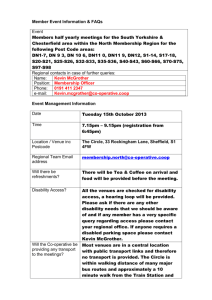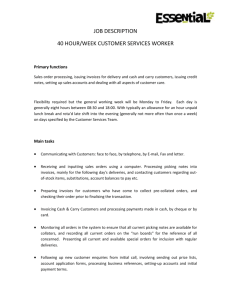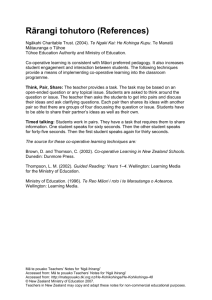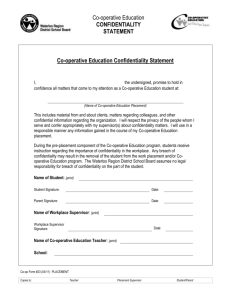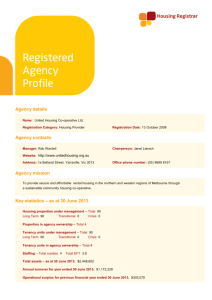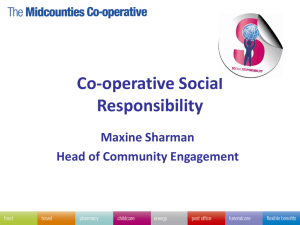Literacy Co-operative Reading Reciprocal Teaching
advertisement
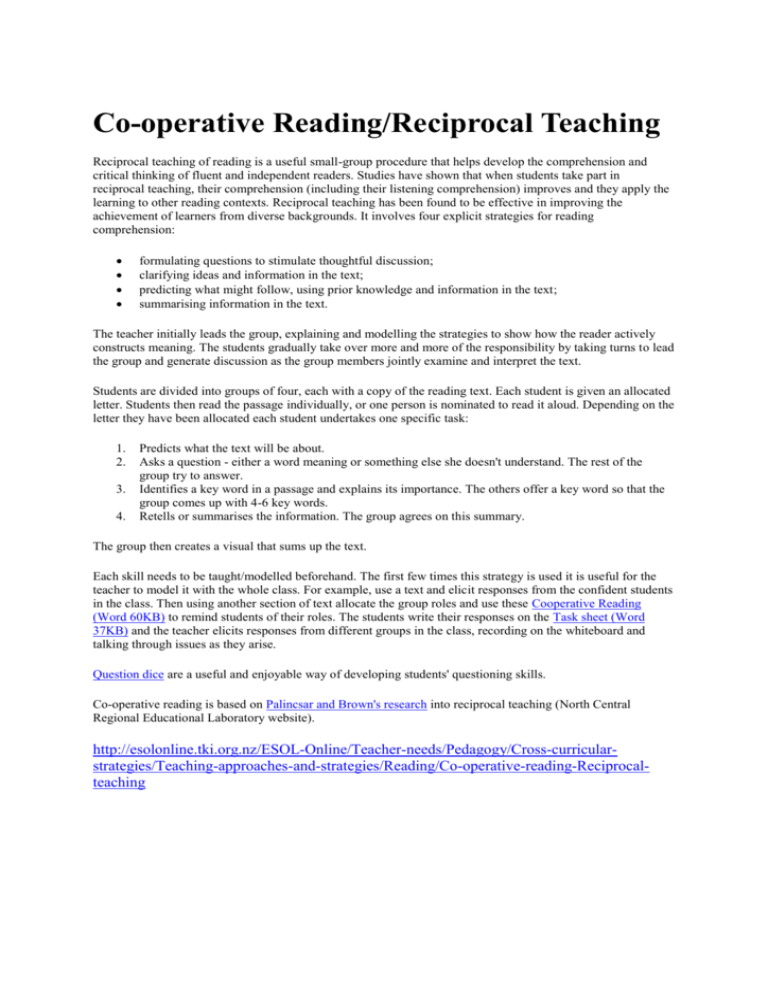
Co-operative Reading/Reciprocal Teaching Reciprocal teaching of reading is a useful small-group procedure that helps develop the comprehension and critical thinking of fluent and independent readers. Studies have shown that when students take part in reciprocal teaching, their comprehension (including their listening comprehension) improves and they apply the learning to other reading contexts. Reciprocal teaching has been found to be effective in improving the achievement of learners from diverse backgrounds. It involves four explicit strategies for reading comprehension: formulating questions to stimulate thoughtful discussion; clarifying ideas and information in the text; predicting what might follow, using prior knowledge and information in the text; summarising information in the text. The teacher initially leads the group, explaining and modelling the strategies to show how the reader actively constructs meaning. The students gradually take over more and more of the responsibility by taking turns to lead the group and generate discussion as the group members jointly examine and interpret the text. Students are divided into groups of four, each with a copy of the reading text. Each student is given an allocated letter. Students then read the passage individually, or one person is nominated to read it aloud. Depending on the letter they have been allocated each student undertakes one specific task: 1. 2. 3. 4. Predicts what the text will be about. Asks a question - either a word meaning or something else she doesn't understand. The rest of the group try to answer. Identifies a key word in a passage and explains its importance. The others offer a key word so that the group comes up with 4-6 key words. Retells or summarises the information. The group agrees on this summary. The group then creates a visual that sums up the text. Each skill needs to be taught/modelled beforehand. The first few times this strategy is used it is useful for the teacher to model it with the whole class. For example, use a text and elicit responses from the confident students in the class. Then using another section of text allocate the group roles and use these Cooperative Reading (Word 60KB) to remind students of their roles. The students write their responses on the Task sheet (Word 37KB) and the teacher elicits responses from different groups in the class, recording on the whiteboard and talking through issues as they arise. Question dice are a useful and enjoyable way of developing students' questioning skills. Co-operative reading is based on Palincsar and Brown's research into reciprocal teaching (North Central Regional Educational Laboratory website). http://esolonline.tki.org.nz/ESOL-Online/Teacher-needs/Pedagogy/Cross-curricularstrategies/Teaching-approaches-and-strategies/Reading/Co-operative-reading-Reciprocalteaching Co-operative Reading - Task Cards #1 Co-operative Reading Your task is to: 1. Predict what you think the text will be about before the group starts reading and share this with the group. Use headings, sub headings and visuals. 2. As you read confirm (or disprove) your prediction and explain your thinking to the group during the discussion time. #2 Co-operative Reading Your task is to: 1. Ask a question about the text for the rest of the group to answer. Try to ask a question about the meaning of the text rather than a question about the meaning of a particular word, although you can do this as well. The group will take turns to help you answer the question. 2. Lead the rest of the group to ask questions in turn, and help them to answer them. #3 Co-operative Reading Your task is to: 1. Identify a key word in the text and explain it. 2. Lead the others to also identify and explain key words, until the group has a list of about 10 - 12 words. 3. As a group, decide on no more than 8 key words. #4 Co-operative Reading Your task is to: 1. Retell or summarise the information in your own words. 2. After everyone has had a turn, lead the group discussion so that the group agrees on a summary statement using the list of key words. Cooperative Reading - Task Sheet Read the text carefully and complete the following activities. After each activity your teacher will stop you so that the whole class can share their ideas. 1. Use headings, subheadings and visuals to predict what the text will be about. Think about what you already know about this topic. 2. Write a question about something that you don't understand about the text. 3. Write down what you think are the 6 most important key words. 4. Retell or summarise the information.

